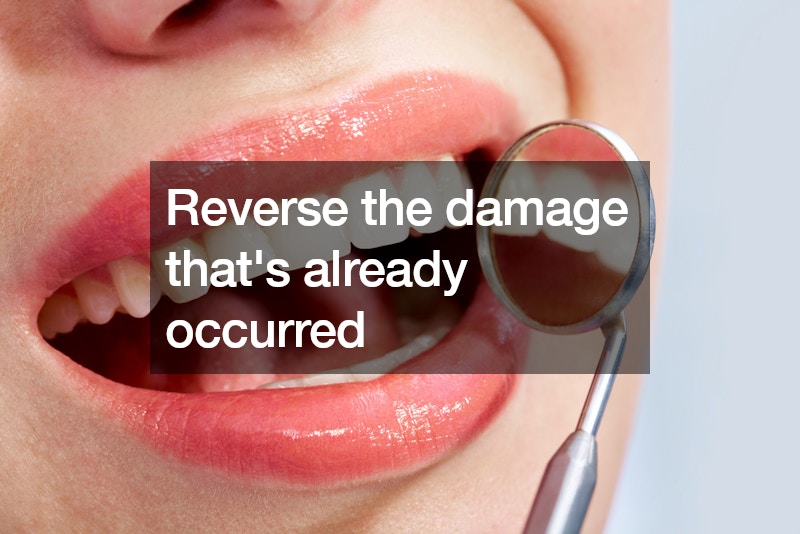Paying your dentist a visit on a regular basis is the best way for you to keep your teeth and gums in the best health. They know how to spot signs of cavity between teeth, as well as how to reverse this damage. If you have unhealthy molars, you can be sure that your dentist will spot them and let you know what to do in terms of taking care of them. With dedication and the help of an expert, you may even be able to reverse the damage that’s already occurred.
If you like, you can also check online for solutions, searching for something like “can I keep cavity from getting worse?” Compare the details that you find in this search with those that your dentist talks to you about. This might give you the best idea of what you need to do since there will be a lot of information available for you to use. You should also be able to talk to your dentist about the long term effects of missing teeth if this is something that you’re dealing with. They can give you the information that you need and also talk to you about possible solutions that are available to you.

Losing teeth is a natural process that happens to everyone as they age. However, some things can accelerate tooth loss, such as poor oral hygiene or untreated gum disease. Tooth loss can also be the result of an accident or injury.
Whatever the cause, losing teeth can have a significant impact on your quality of life. Not only does it make it difficult to eat certain foods, but it can also lead to social isolation and self-esteem issues. If you are missing teeth and are looking for ways to replace them, read on for more information about your options.

Common Causes of Tooth Loss
Tooth decay is the most common cause of tooth loss in adults over 30. It usually happens when food particles are left in between teeth or spot brushing doesn’t remove plaque completely. The bacteria in the mouth use sugar to produce acid, which eats away at tooth enamel and leads to cavities.
Another common cause of tooth loss is gum disease. If you don’t floss or brush your teeth regularly, food can build up in areas. Bacteria in the mouth act on this food to form plaque, which hardens into tartar. Eventually, this tartar irritates the gums and causes them to recede. The surrounding bone can also be damaged in the process, leading to tooth loss.
Other causes of tooth loss include:
-
Aging:
As you age, your teeth can become worn or broken due to normal wear and tear.
-
Excessive chewing:
Overuse of the jaw muscles over time can cause teeth to shift, leading to gaps between them where food could get stuck.
-
Root canal treatment:
If a tooth has died because of infection, root canal treatment can be used to remove the infected tissue and replace it with filling.
-
Trauma:
An accident or sports injury could damage one or more teeth beyond repair. Unrepaired tooth fractures can also increase your risk for tooth loss.
Effects of Dental Problems
Usually, pain and swelling precede tooth loss, which can inhibit chewing or even talking. Sometimes this pain can be so severe that you may even need to take strong pain medication. If your teeth are particularly decayed or damaged, you may also face the risk of an infection in your mouth.
Long-term tooth damage can cause significant damage to the jaw bone and surrounding soft tissue. As a result, it can become more difficult for dentists or oral surgeons to implant a replacement tooth or bridge.
Prevention Is the Best Medicine
The best way to avoid tooth loss is by practicing proper oral hygiene and having regular dental check-ups.
Brush your teeth at least twice a day with fluoride toothpaste and floss after every meal. You can also use a mouthwash to kill bacteria and freshen your breath.
See a dentist at least once a year or six months if you have a progressive dental problem, such as gum disease or diabetes. During your appointment, consider getting a thorough dental cleaning to get rid of any tartar, plaque, and even food particles you fail to remove with flossing and brushing.
It also pays to watch what you eat. Avoid sugary foods and drinks because they promote tooth decay as bacteria love to feed on them.
You may also need to stop smoking. Smoking and chewing tobacco can accelerate gum disease, which increases your risk for tooth loss.
Replacing a Missing Tooth
The dentist will try their best to save your teeth as much as possible. However, sometimes removing them is the best option to avoid the risk of more severe infection and other dental problems.
Meanwhile, to ensure you can still chew and speak properly, the dentist may replace the missing tooth. One of the options is a dental implant. Implants are created to represent your roots, so they can attach to the jawbone. Dental implants look, feel, and even function like natural teeth.
If you have one or more missing teeth on either side of your mouth, getting dental bridges is another option. Bridges are attached between two crowns that cover the adjacent teeth. They effectively replace the missing tooth as well as strengthen your bite.
In some cases, you can also opt for a removable alternative to replace them such as a denture or partial denture that fits into your mouth and is secured with dental adhesive.
To know the most suitable option for tooth replacement, the dentist will conduct tests such as an X-ray to determine the state of your mouth, such as the position of your teeth and the condition of your jaws.
You can lose your tooth for many reasons. Regardless of the cause, know you have options to prevent this from happening or even replace what’s missing.

